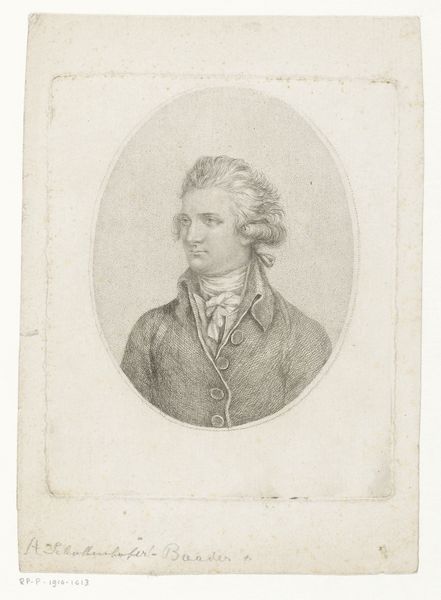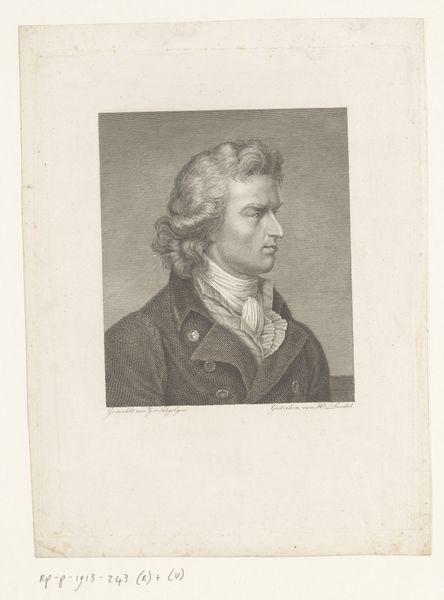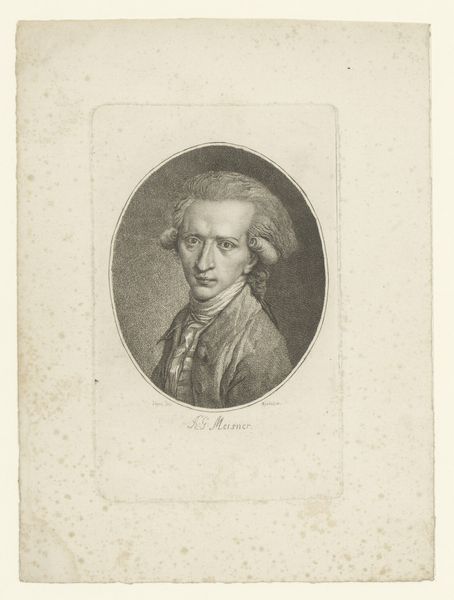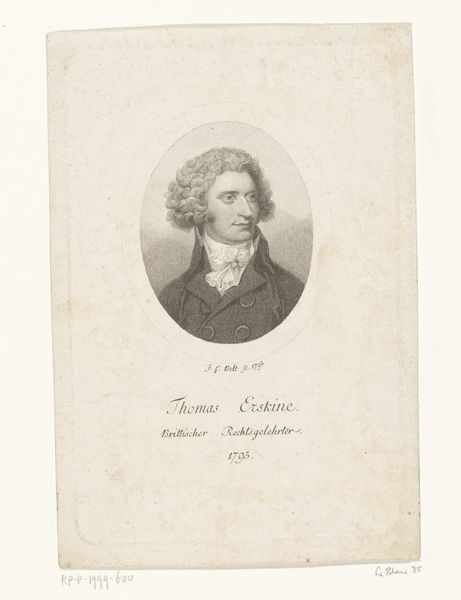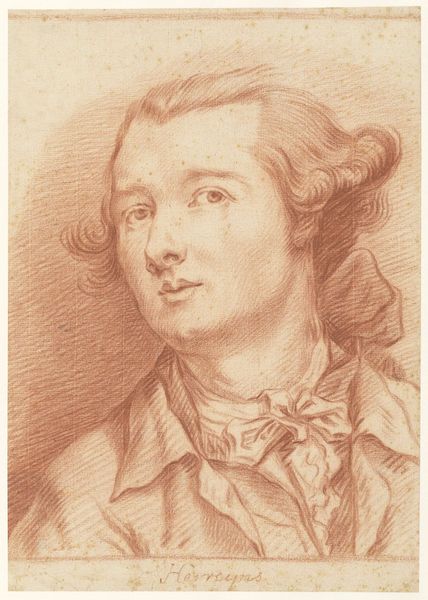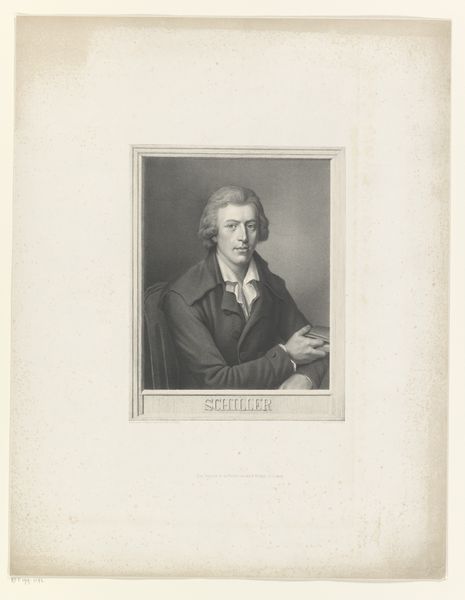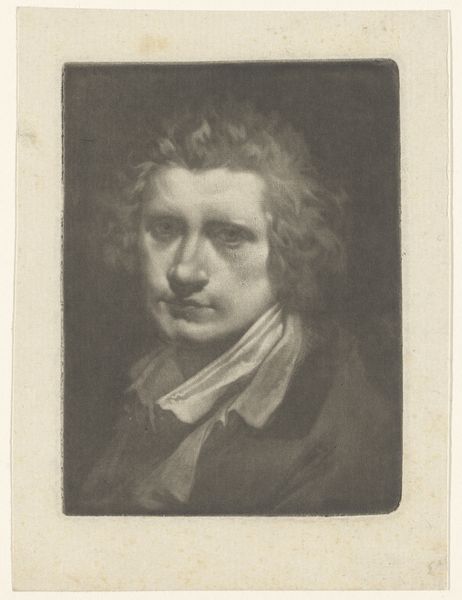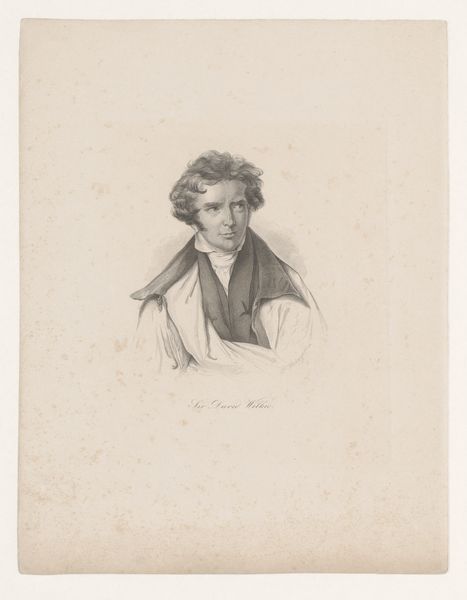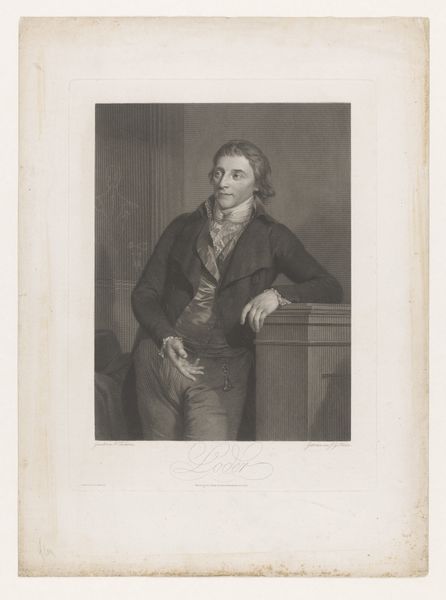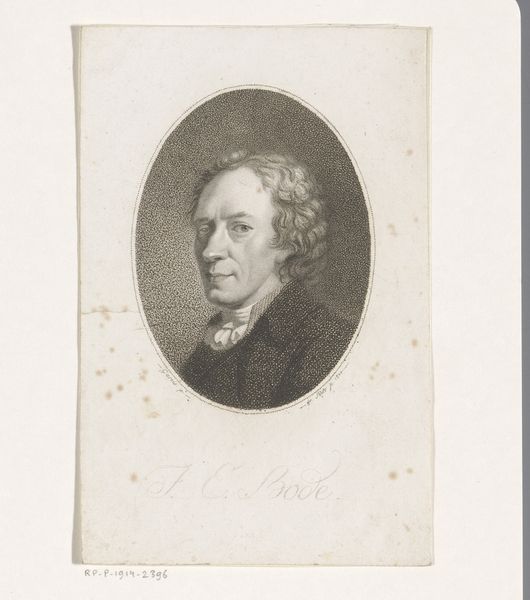
Copyright: Public Domain
This self-portrait was made by Johann Jakob Hoff around 1856, probably with graphite on paper. Note how the soft circular form, framing Hoff’s head and shoulders, immediately invites a feeling of gentle introspection. Hoff's meticulous hatching defines the planes of his face and clothing. The way light models his features—the soft gradations on his cheek, the subtle shadows under his eyes—lends the image a sense of depth. There’s an interesting tension between the precision of his facial features and the looser treatment of his hair and clothing. This contrast gives the portrait a dynamic quality, capturing both the artist’s likeness and a sense of his personality. The oval format could be seen as a deliberate choice, evoking classical portraiture conventions while also allowing Hoff to explore the tonal range of graphite. It transforms a simple sketch into a study of form and self-representation. By focusing on the formal elements, Hoff’s self-portrait becomes not just a likeness but an exploration of identity through line and shadow.
Comments
No comments
Be the first to comment and join the conversation on the ultimate creative platform.
